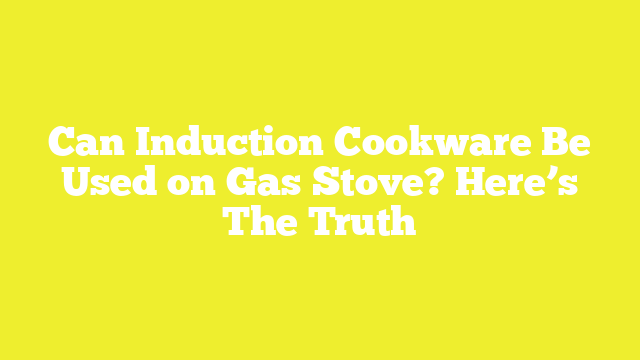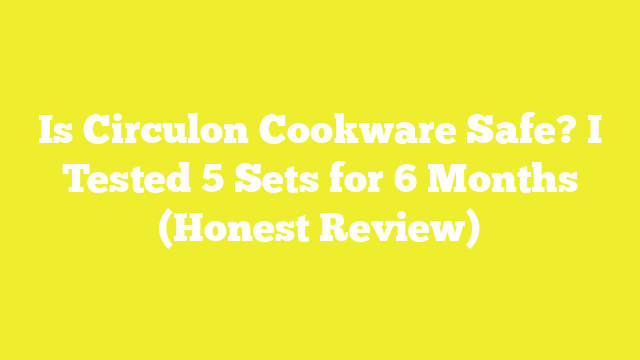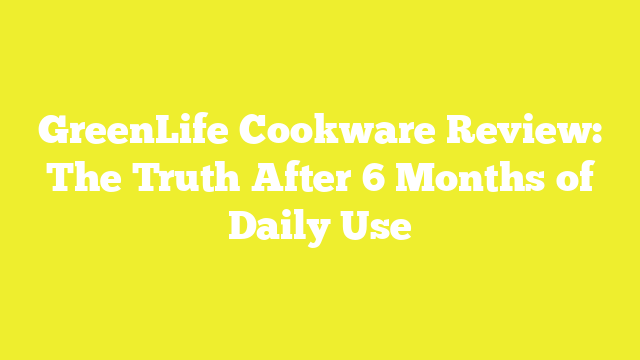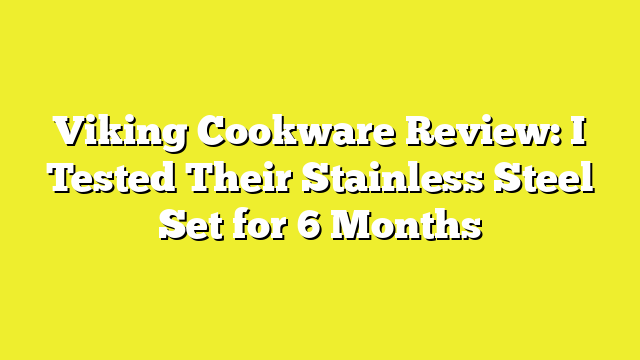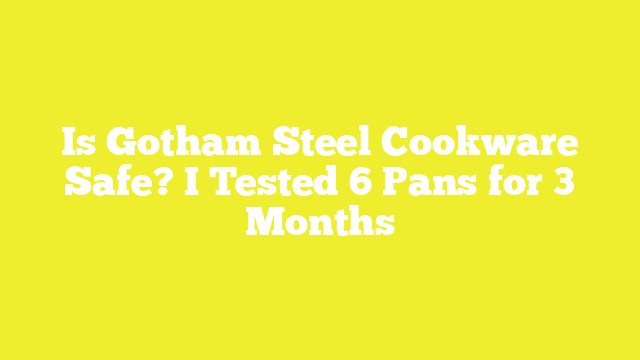Is Enameled Cookware Safe? The Truth About Daily Use
Is enameled cookware safe? This question has intrigued cooks since its invention in 17th Century Germany. While these pots and pans have stood the test of time for centuries, their safety aspects deserve a closer look.
Modern high-quality enamel cookware offers exceptional durability and safety, adhering to strict FDA regulations. However, certain factors like bright colors in vintage pieces might indicate the presence of harmful materials such as lead or cadmium. In fact, the safety of your enamel cookware depends largely on its quality, usage, and maintenance.
We’ll explore the crucial aspects of enamel cookware safety, from choosing reliable brands to proper maintenance techniques. You’ll learn how to identify safe cookware, understand potential risks, and maximize the lifespan of your enamel pots and pans through proper care.
How Safe is Your Enamel Pan?
Enamel cookware combines durability with non-reactive properties, making it a popular choice for home cooks. Nevertheless, understanding its safety aspects requires attention to specific details and warning signs.
Signs of unsafe cookware
The most critical safety concern with enamel cookware stems from potential chipping. When the enamel coating gets compromised, it poses two significant risks. First, the loose enamel chips could end up in your food, potentially causing injury if ingested. Additionally, damaged enamel exposes the underlying metal, which might leach into your meals.
Watch out for these warning indicators:
- Black spots indicating exposed metal beneath the enamel coating
- Hairline cracks in the enamel surface
- Loss of the characteristic glossy finish
- Visible chips or flaking in the interior coating
Furthermore, thermal shock presents another safety concern. Sudden temperature changes can cause the enamel to crack or chip. Therefore, placing a hot pan directly into cold water or using high heat settings might compromise your cookware’s integrity.
Quality indicators
Identifying safe, high-quality enamel cookware involves examining several key factors. First and foremost, reputable manufacturers adhere to strict safety standards regarding harmful substances. Although some brightly colored enamel cookware might contain trace amounts of lead or cadmium, particularly in older or lower-quality pieces, top-tier brands have eliminated these toxic metals from their production processes.
Quality enamel cookware demonstrates these characteristics:
- Smooth, uniform coating without imperfections
- Certification from trusted sources confirming absence of harmful materials
- Sturdy construction with well-attached handles
- Even heat distribution across the cooking surface
The interior enamel quality particularly matters as it directly contacts your food. Premium enamel cookware complies with California Proposition 65, which limits lead content to no more than 0.1 mg/liter and cadmium to 0.049 mg/liter when leached into 4% acetic acid.
Although high-quality enamel cookware often commands steeper prices, this investment typically translates to better safety and longevity. Moreover, superior enamel coatings resist chipping and maintain their integrity even with regular use. The non-porous nature of quality enamel prevents bacteria from becoming trapped, offering an additional safety benefit.
Remember that not all enamel cookware delivers equal performance or safety standards. Choosing products from established manufacturers who prioritize safety testing and quality control helps ensure your cookware remains safe for daily use.
Impact of Cooking Methods
Proper cooking methods play a vital role in maintaining the safety of your enameled cookware. Understanding these methods helps prevent damage and ensures long-lasting performance.
High heat effects
Temperature control stands out as a crucial factor in enameled cookware safety. Using high heat settings can permanently damage the enamel coating. For optimal results, stick to low or medium heat settings, as drastic temperature changes might cause the cookware to crack.
The enamel coating, though durable, requires gradual heating to maintain its integrity. Placing a hot pan directly into cold water or sudden temperature shifts can lead to thermal shock. This thermal stress often results in irreversible damage to the protective enamel layer.
Acidic food reactions
One significant advantage of quality enameled cookware lies in its non-reactive nature. Unlike traditional cookware, these pots and pans handle acidic ingredients without compromising food quality or safety. The enamel coating prevents interaction between acidic foods and the underlying metal.
You can confidently prepare:
- Tomato-based sauces
- Wine reductions
- Citrus marinades
- Vinegar-based dishes
Still, prolonged exposure to acidic ingredients might cause surface staining. Though this doesn’t affect safety, it can impact the cookware’s appearance over time.
Metal utensil risks
Despite the durability of enameled cookware, metal utensils pose specific risks. Even though technically safe, metal spatulas and spoons can leave marks on the interior surface. These marks often require special cleaners to remove, making maintenance more challenging.
The rim area deserves special attention, as it represents a vulnerable point where exterior and interior enamel coatings meet. Banging metal utensils against the rim can create breaks in the ceramic coating, potentially exposing the underlying metal to rust.
To protect your cookware, consider these alternatives:
- Wooden spoons
- Silicone spatulas
- Heat-resistant plastic utensils
The risk of damage increases notably when using metal utensils on hot cookware, as heated enamel becomes more susceptible to scratching. Consequently, gentle handling with appropriate utensils ensures both safety and longevity of your enameled cookware.
Maintaining Safety Over Time
Keeping your enameled cookware in pristine condition requires diligent care and attention to detail. Let’s explore essential maintenance practices that ensure both safety and longevity.
Cleaning best practices
Proper cleaning starts with allowing your cookware to cool completely before washing. For daily cleaning, warm soapy water proves most effective. Even if manufacturers claim dishwasher compatibility, hand washing extends the life of your enamel coating.
For stubborn stains, create a mixture of water and baking soda, bringing it to a simmer for 8-10 minutes. This gentle yet effective method loosens burnt food without damaging the surface. Alternatively, soaking the pan in warm water for 15-20 minutes helps release stuck-on residue.
Avoid using steel wool, scouring pads, or harsh detergents that might compromise the enamel surface. Instead, opt for soft cleaning tools like nylon scrubbing pads or specially designed brushes.
Storage tips
Storing enameled cookware properly significantly impacts its lifespan. Place your cookware in dry cupboards or drawers, ideally in single rows rather than stacked. If stacking becomes necessary, use protective layers between pieces to prevent scratching.
Consider these storage guidelines:
- Store lids right-side up with the pot
- Keep cookware away from areas with moisture or temperature fluctuations
- Use felt pan protectors or kitchen towels between stacked items
When to replace
Recognizing when to replace your enameled cookware ensures continued safety. Replace your cookware immediately upon noticing:
- Cracks in the enamel coating
- Signs of warping or pitting
- Holes developing in the surface
Undoubtedly, quality enameled cookware can last generations with proper care. Yet, once the interior shows significant wear or develops cracks, prioritize safety by replacing the piece. Regular inspection helps identify potential issues before they compromise food safety.
Remember to oil the rims of lids and vessels occasionally, as these areas remain susceptible to rusting. This simple maintenance step extends the life of your cookware substantially.
Choosing Safe Enamel Cookware
Selecting the right enameled cookware involves careful consideration of both quality and cost factors. As the market offers numerous options, understanding key aspects ensures a safe investment in your kitchen arsenal.
Brand reliability factors
Leading manufacturers like Le Creuset and Staub have established their reputation through meticulous craftsmanship and quality control. These legacy brands consistently deliver superior performance, primarily because their manufacturing processes adhere to strict safety standards.
Quality indicators to consider include:
- Smooth, uniform enamel coating without imperfections
- Tight-fitting lids that seal effectively
- Ergonomic handles designed for secure grip
- Even heat distribution across the cooking surface
First-rate manufacturers ensure their products remain free from toxic metals like lead and cadmium. Accordingly, purchasing from established brands provides assurance about product safety and longevity.
Price vs safety balance
The cost spectrum for enameled cookware varies substantially, reflecting differences in manufacturing quality and brand reputation. Entry-level options start around USD 30-50, whereas premium pieces from established manufacturers can exceed USD 300.
Mid-range options, priced between USD 60-100, often provide an optimal balance between quality and affordability. These pieces typically feature:
- Thicker enamel coating
- Better heat distribution
- Enhanced durability
- Reliable safety features
Interestingly, higher-priced cookware often demonstrates superior longevity. While a budget-friendly pan might last 2-3 years, premium pieces can serve generations. This durability factor makes expensive options potentially more cost-effective over time.
Consider these practical aspects when evaluating prices:
- Lifetime warranties offered by premium brands
- Replacement costs for lower-quality pieces
- Frequency of use in your kitchen
- Specific cooking needs
Premium manufacturers like Le Creuset weigh approximately the same as budget options but excel in craftsmanship. The primary difference lies in the quality of materials and manufacturing processes, which directly impacts safety and performance.
Conclusion
Enamel cookware stands as a reliable choice for safe, long-lasting kitchen equipment. Though these pots and pans require careful handling, their benefits outweigh potential concerns when properly maintained.
Quality enamel cookware from trusted manufacturers offers exceptional safety through non-reactive surfaces and durable construction. Regular inspection for chips or cracks, combined with proper cleaning and storage methods, helps ensure years of safe cooking.
The investment decision comes down to personal needs and budget considerations. While premium brands command higher prices, their superior craftsmanship and safety features often justify the cost through extended lifespan and better performance.
Remember that safe cooking with enamel cookware depends largely on three key factors: choosing high-quality pieces, following appropriate cooking methods, and maintaining proper care routines. Armed with this knowledge, you can confidently select and use enamel cookware that will serve your kitchen safely for years ahead.
